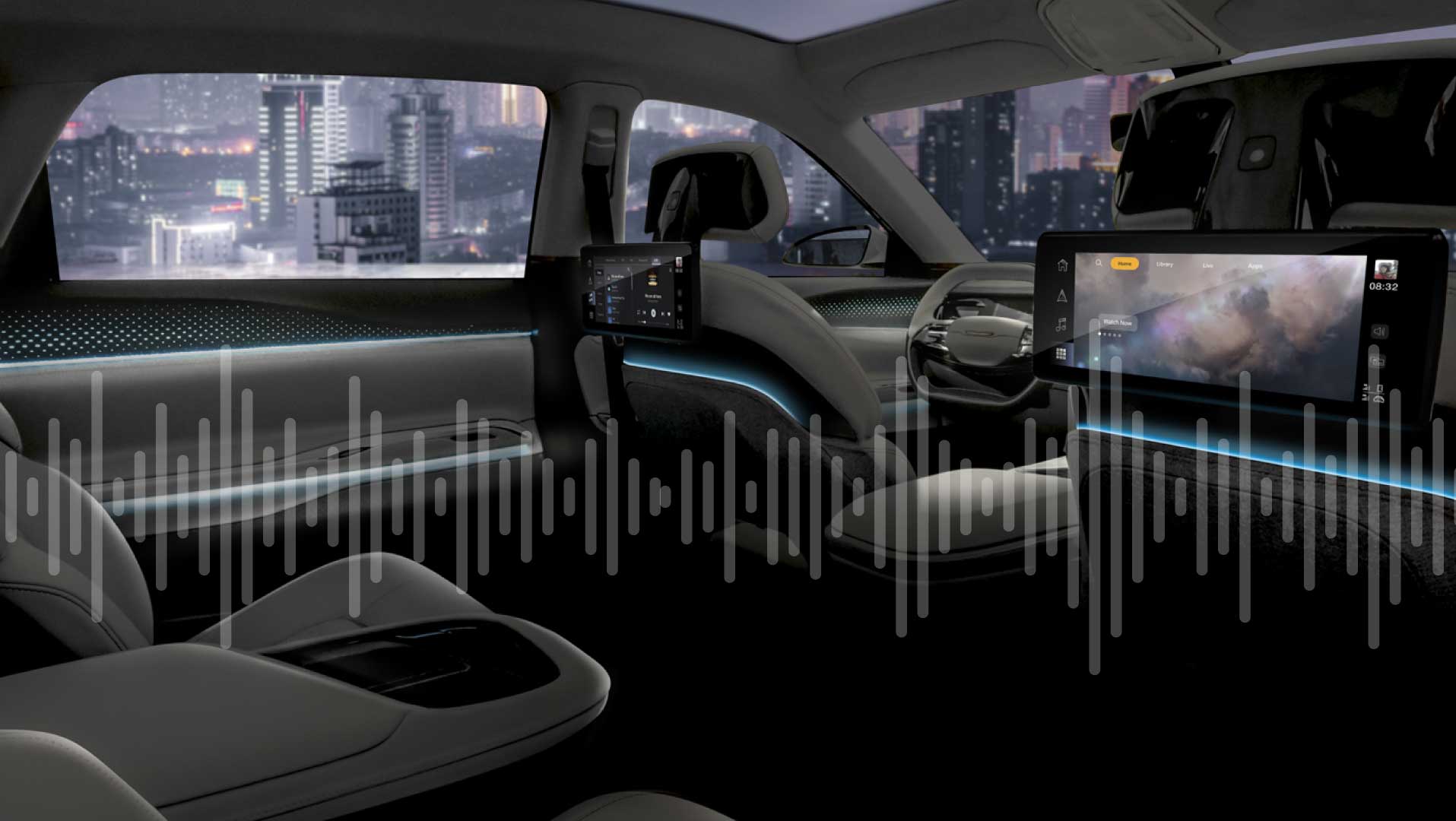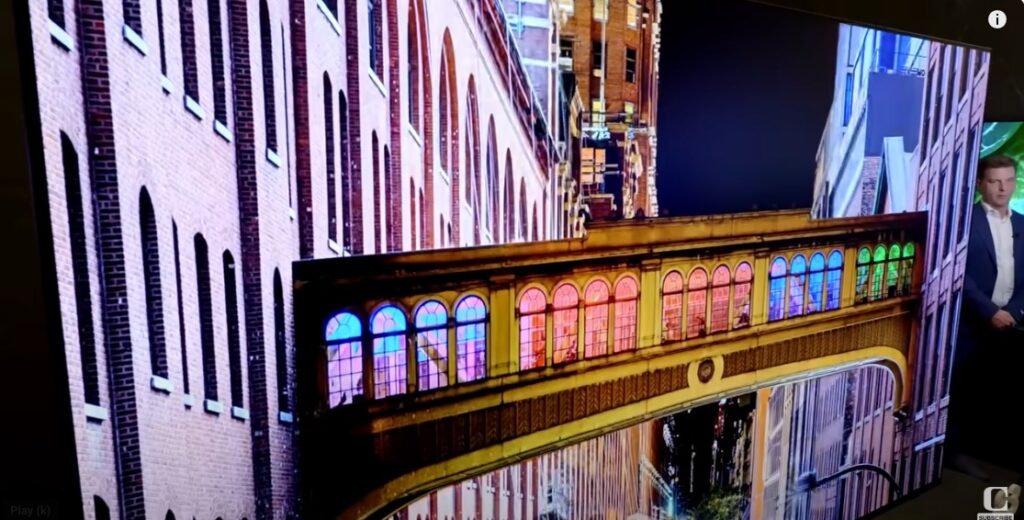
Maintaining Automaker Control: SoundHound AI’s Solution to the Apple CarPlay Dilemma
Car manufacturers retain control over their user interface and valuable customer data with the SoundHound approach.
Products
Our Platform
SoundHound’s independent voice AI platform is built for more natural conversation.
Solutions
For Every Industry
Find a customizable and scalable voice AI solution for your industry or use case.
Resources
Get the latest voice AI news, keep up on trends, get expert advice, and discover new solutions.
Our Company

Frost & Sullivan Names SoundHound AI a Leader for Enterprise Conversational AI in Healthcare 2024

As artificial intelligence reaches unprecedented levels of sophistication, CES 2025 tackled a crucial question: How do we make these powerful technologies truly accessible and useful in our daily lives? The answer emerged through innovations that bridge the gap between raw AI capability and natural human interaction.
This bridge was built on two foundational developments unveiled at the show.
The breakthrough was demonstrated with SoundHound Chat AI, a groundbreaking in-vehicle voice platform that integrates both real-time and generative AI capabilities with the NVIDIA DRIVE AGX™ platform. It provides edge connectivity, enabling sophisticated voice interactions even without cloud connectivity.
This fusion of power and accessibility was evident throughout CES, starting with increasingly innovative vacuums such as the Roborock Z70 that has a mechanical pincer arm that picks up stray socks consumers have inconveniently left in its path and tosses them in a laundry basket.
The Halliday smart glasses were also unveiled at CES, using what the company calls the world’s smallest optical module. Despite its 3.6mm size, the display provides users with a field of view similar to that of a 3.5-inch screen.
Samsung made waves with its 77-inch Transparent MICRO LED display, which transforms from a transparent surface to a vibrant display on demand. The most compelling demos showed how these screens could integrate into everyday spaces, from kitchen windows that display recipes while maintaining a view outside, to living room partitions that transform into entertainment centers.

LG’s standout was its “Dual-View OLED” displays – screens that can switch between a transparent mode for ambient awareness and a traditional display mode for focused work.
This evolution of display technology raises an interesting challenge: as screens become more versatile and integrated into our environment, how do we interact with them naturally? This is where multi-modal interaction becomes crucial. The days of purely touch-based interfaces are giving way to a more nuanced approach:
– When the Samsung display is in transparent mode, voice commands offer a natural way to activate features without leaving fingerprints on the clear surface
– For LG’s laptops, users can seamlessly switch between touch inputs when working directly with content and voice commands when the display is in transparent mode or when their hands are occupied
– These multimodal interfaces recognize context – using touch when precision is needed (like detailed photo editing) and voice when convenience is paramount (like changing display modes or quick system commands)
The real-world impact of this AI evolution was perfectly illustrated at CES through SoundHound AI’s demonstration of the first-ever in-car voice commerce ecosystem. This isn’t just about asking your car for directions to a restaurant – it’s about having a natural conversation to explore menu options, place an order, pay for it and then seamlessly navigate there, all through voice commands. This integration transforms the vehicle from a simple transportation device into an AI-powered personal assistant that can actually complete transactions on your behalf.
SoundHound AI’s Co-Founder and CEO, Keyvan Mohajer, demonstrates Voice Commerce in the Lucid Air.
Automotive manufacturers sent a clear message at CES 2025: they’re taking back control of the in-vehicle experience. Gone are the days when smartphones and third-party devices dominated the cockpit. Honda’s stunning electric autonomous concept car, with its DeLorean-inspired design, showcased not just innovative engineering but a proprietary vehicle operating system (OS), the ASIMO OS, for use in Honda 0 Series models, designed to create a uniquely Honda experience. Mercedes-Benz made similar waves with its own OS, demonstrating how premium automakers are investing heavily in owned software experiences rather than relying on Android Auto or Apple CarPlay to mediate the relationship with their customers.
Original research revealing the new opportunities for automakers with voice generative AI is described in this research whitepaper, Reclaiming the Cockpit: How Voice Generative AI Creates Strategic Advantage for Automakers
The AI House at CES 2025 marked a significant evolution from previous years, showcasing the rapid advancement and integration of AI across various industries. A key topic was the rise of AI agents, or Agentic AI, a new methodology that expands the capabilities of conversational AI beyond single-task, pre-programmed dialogue paths and hard-coded instructions.
SoundHound AI’s EVP of AI for Enterprise, Michael Anderson, spoke about how Agentic AI marshals the power of numerous agents working together to solve complex, multi-stage problems that require contextual understanding and iterative decision-making.
This approach excels in multi-step, highly variable interactions — like loan approvals, personalized service recommendations, or healthcare queries — where deterministic systems alone may fall short as they lack the adaptability to respond to unpredictable inputs or orchestrate complex workflows seamlessly.
The innovations showcased at CES 2025 signal a transformative shift in how enterprises will engage with consumers in the years ahead. From transparent displays and sophisticated robots to AI-powered vehicles and voice commerce ecosystems, we’re witnessing the emergence of a new paradigm where technology seamlessly integrates into our daily lives through natural, intuitive interactions.
At the forefront of this revolution are voice AI agents, which are evolving from simple command-response systems into sophisticated digital assistants capable of orchestrating complex, multi-step tasks and maintaining contextual awareness throughout extended interactions.
Find out how you can tap into this new paradigm by speaking to a SoundHound expert today.
Subscribe today to stay informed and get regular updates from SoundHound Inc.